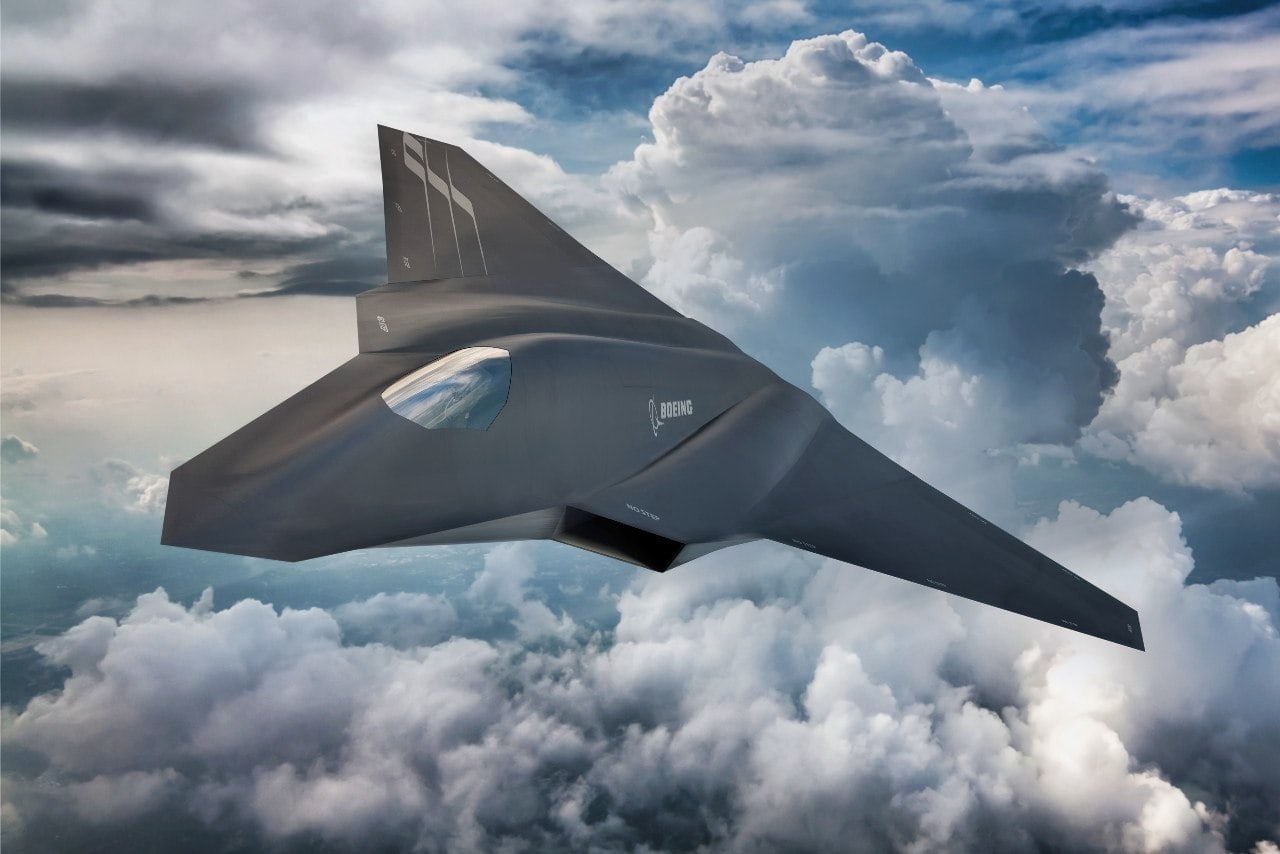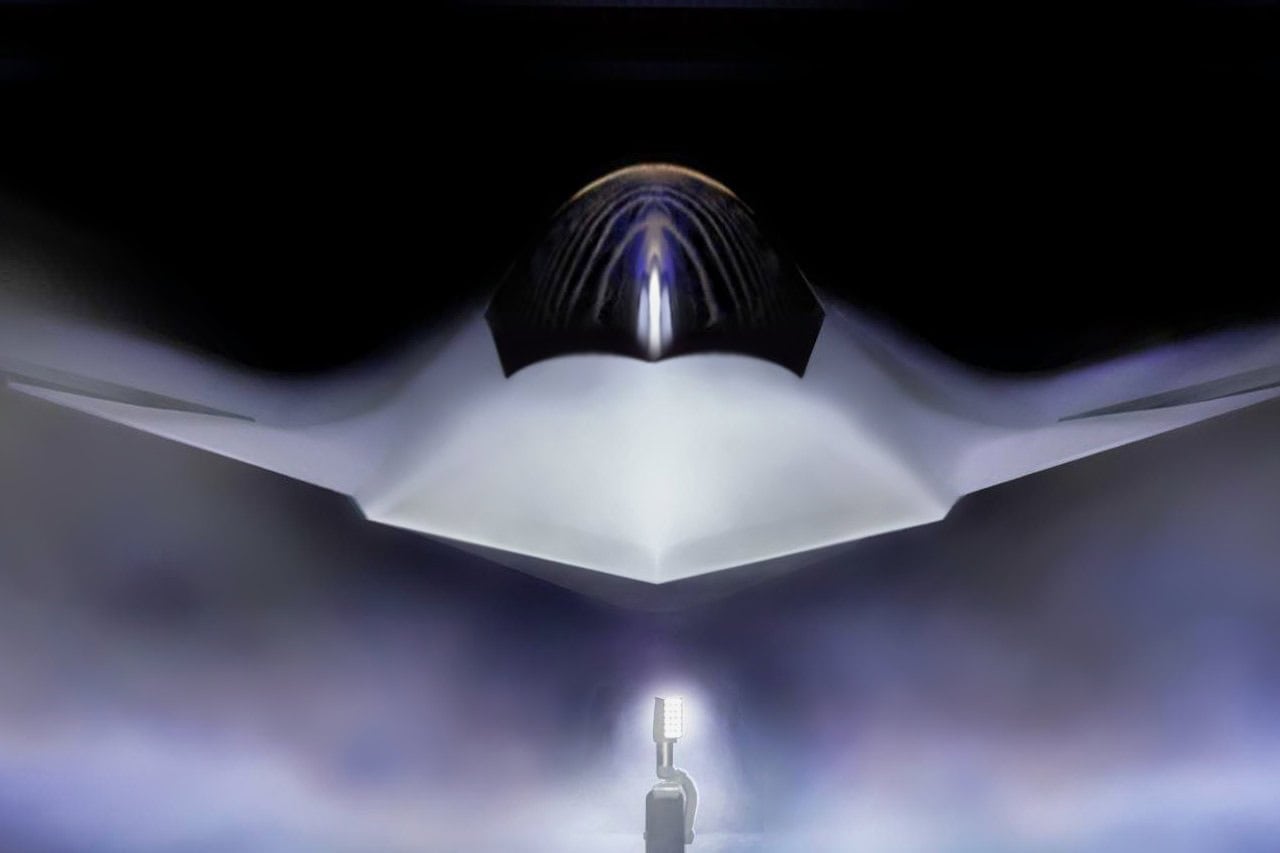F-47 Buy: More Evidence of Trump Peace Through Strength Plan – The Trump administration sent a strong signal on future defense policy with a quick out-of-the-block decision setting a deal for the F-47, a sixth-generation fighter aircraft.
Selecting a contractor for what the President declared “will be the most advanced, most capable, most lethal aircraft ever built … Nothing in the world comes even close.” Taken in the context of other early moves by the Trump team, it argues that peace through strength really will be the cornerstone of White House defense policy.

Shown is a graphical artist rendering of the Next Generation Air Dominance (NGAD) Platform. The rendering highlights the Air Force’s sixth generation fighter, the F-47. The NGAD Platform will bring lethal, next-generation technologies to ensure air superiority for the Joint Force in any conflict. (U.S. Air Force graphic)
F-47 and Modern War
Many describe the F-47 as a pillar in establishing an air dominance capability by the US armed forces for the foreseeable future.
At the announcement of the decision, Secretary of Defense Pete Hegseth asserted the decision “sends a very direct, clear message to our allies that we’re not going anywhere and to our enemies that we will be able to project power around the globe unimpeded for generations to come.” The platform will integrate all the latest innovations in stealth, AI, and UAV technology.
The F-47 will fill a significant void left by the Obama administration when it prematurely canceled the F-22 fighter program, severely limiting the inventory of the US air dominance force. Deployment of the F-47 will signifyingly boost US air power, enabling American and allied forces to establish air dominance in campaigns and, in turn, significantly enabling the capabilities of US and allied forces, particularly those flying the F-16 and F-35 fighter aircraft to fully and aggressively employ their capabilities.
The Trump administration’s commitment to the F-47 stands out as even more significant in the context of other early indicators of defense policy.
Winning in modern conflict is more like making a smoothie than a fruit salad.
Fruit salad is a mix of distinct individual pieces. A smoothie blends the fruit into a single integrated meal. Few would dispute that contemporary war occurs in multiple domains—air, sea (above and below), land, cyber, and space. Russia’s war against Ukraine is a case in point. To hold off Moscow’s invasion, Ukrainian forces had to fight in every dimension of war—even fighting at sea without a navy and from space without its own satellites.
No modern military power, the US included, could count on surviving, let alone persevering in contemporary conflicts, without the capacity to operate in every dimension. Still, like a fruit salad, dimensional operations are just independent pieces mixed in the bowl of battle space. Suppose a military force wants to project the capacity to deter enemies with peace through strength. In that case, even more dimensions are required—the means to synergistically blend operations in every dimension into a unified fighting tool. The Trump team shows signs of planning to do exactly that.
Strategic Forces
Strategic (nuclear weapons and missile defense) and conventional forces (tanks, planes, ships, etc.) go hand-in-hand to create a strong deterrent. There is already a strong bipartisan commitment to improving the US nuclear arsenal. Trump has also called for next-level advancements in missile defense, including a “golden dome” enhancement of homeland defense. A strong offense-defense mix—the capability to strike an enemy and at the same time protect your forces and population from attacks—is the strongest and most stable form of strategic deterrent.
Space
US space capabilities have advanced significantly since the creation of the Space Force. Strong expectations exist that the President will continue expanding military space capabilities, including establishing a Space Force National Guard. Military space operations are a powerful enabler for combat operations in every domain. In addition, the US commitment to military, civil, and private sector space operations demonstrates that Washington plans to challenge, if not overmatch, China, which Trump considers the pacing threat to US interests, in space competition.
Sea
Trump has sent very strong signals demanding a significant expansion of American maritime power, even establishing a separate directorate in the National Security Council to address shipbuilding.
Land
Army recruiting, long a bugbear for the service, has increased markedly. That development matches with commitments from the new leadership of the defense department to focus on readiness, operational capability, and lethality. Actions that should lead to the US delivering stronger and more capable land forces.
All these indicators align with the F-47 decision, suggesting that Trump wants a more dominant military force consistent with the policy of peace through strength.
Actions and Words
Deterrence is not just a measure of capability. Enemies also consider the intent and will of their adversary. Trump has consistently maintained he wants to “prevent World War III.” He has also often stated his aversion to starting wars, endless wars, and regime change.

NGAD Fighter from Boeing.
Nevertheless, Trump has also frequently demonstrated a willingness to use force to protect national interests. He did this on several occasions during his first term. Trump has also acted with alacrity since coming back into office, striking terrorist targets in Somalia and elsewhere and launching a military campaign against the Houthis.
Impatience and Strength
Trump’s early defense policy decisions reflect his anxiousness to implement change as quickly as possible. He knows he is a one-term president (as his two terms are separated) and remembers from his first term how rapidly time can pass without progress unless decisive and disruptive action is taken. The President has also spent four years developing plans and a team to drive decisive and disruptive action—and now, he is backed by strong public and political support and is determined to act and to act quickly.
The F-47 is a case in point. Many of his supporters are skeptical of the military-industrial complex and defense spending. Nevertheless, Trump showed no hesitation in moving forward in proposing an expensive new military program.
Trump’s defense policy rush is not a one-off but integral to his broad approach to both governance and the principles of peace through strength. He has two top and nonnegotiable priorities—security and growth.
Even with a rush of new defense spending, the US does not have the combat power to be decisive in any crucial theater: Europe, the Middle East, or the Indo-Pacific. Nor does the US have the luxury of focusing on one theater and ignoring others. America needs friends and allies to step up their commitment to self-defense. Thus, Trump has been blunt and impatient in pressuring others to enhance their military contributions.
Growth is also an essential goal. Peace through strength comes with economic and military power; of course, a strong economy is essential for sustained military excellence and substantial capability. From the World Trade Organization to the Green New Deal to obsolete trade practices and massive budget deficits, the President believes all these are unacceptable impediments to the real growth of the US and its friends and allies.
His disruption, bordering on brutality to some, is relentless, not in the pursuit of punishing friends and allies but in delivering shock and awe to drive real growth in the free world. Further, the President looks determined to reduce economic and strategic dependencies on adversaries to deliver even more freedom of action to the US and safeguard US interests.
Trump knows the US will only be able to afford a robust F-47 program and other defense needs if he can lower the deficit, tame inflation, and grow the economy in real terms. He is both impatient and determined to do it all.
About the Author: Dr. James Jay Carafano
Dr. James Jay Carafano is a leading expert in national security and foreign policy affairs. Carafano previously served as the Vice President of Heritage Foundation’s Kathryn and Shelby Cullom Davis Institute for National Security and Foreign Policy and served in the US Army for 25 years. He is an accomplished historian and teacher as well as a prolific writer and researcher. Follow him on X: @JJCarafano.

